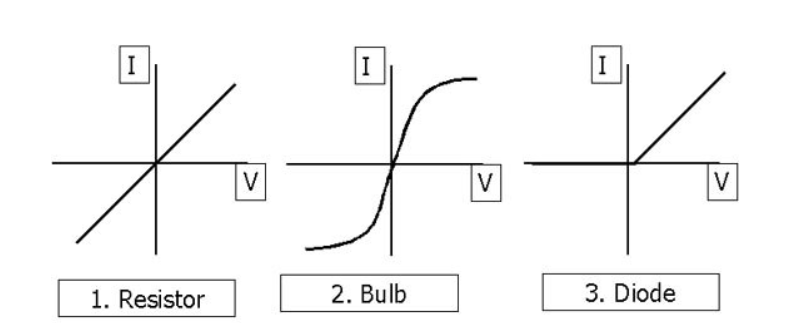Current, Resistance, and Potential Difference
This section explains Current, Resistance, and Potential Difference, covering: Current, Resistance, and Potential Difference Equation, Resistors and Their Behaviour, Fixed Resistors, Filament Lamps, Diodes, Light Dependent Resistors (LDRs) and Thermistors.
Current, Resistance, and Potential Difference
In an electrical circuit, three key quantities are related:
- Current (I) – The flow of electric charge, measured in amperes (A).
- Potential Difference (V) – The energy per unit charge, measured in volts (V). Also known as voltage.
- Resistance (R) – A measure of how difficult it is for current to flow, measured in ohms (Ω).
- Higher resistance means less current flows.
- Higher potential difference (voltage) pushes more current through a circuit.
Current, Resistance, and Potential Difference Equation
$$V = I \times R$$
Where:
- V = potential difference (volts, V)
- I = current (amperes, A)
- R = resistance (ohms, Ω)
Example Calculation
A circuit has a current of 2A and a resistance of 5Ω. What is the potential difference across the component?
$$V = I \times R = 2A \times 5Ω = 10V$$
Answer: The potential difference is 10V.
Resistors and Their Behaviour
Resistors limit the flow of current. Different components behave differently when their resistance changes:
Fixed Resistors
- Have a constant resistance.
- Obey Ohm’s Law: Current is directly proportional to voltage, as long as temperature remains constant.
Filament Lamps
- Resistance increases as the filament heats up.
- Does not obey Ohm’s Law (resistance is not constant).
- Produces a curved current-voltage graph.
Diodes
- Allow current to flow in one direction only.
- Have very high resistance in the reverse direction.
- Used in circuits for rectification (converting AC to DC).
Light Dependent Resistors (LDRs)
- Resistance decreases when light intensity increases.
- Used in automatic night lights, cameras, and street lighting.
Thermistors
- Resistance decreases as temperature increases.
- Used in temperature sensors, thermostats, and electronic circuits.

Summary
- Current, potential difference, and resistance are linked by $V = I \times R$.
- Resistors, filament lamps, diodes, LDRs, and thermistors behave differently.
- Filament lamps and diodes do not obey Ohm’s Law.
- LDRs and thermistors are useful for sensing changes in light and temperature.
